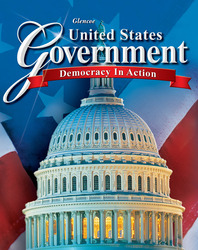United States Government: Democracy in ActionChapter 17:
Elections and VotingChapter Overviews[logo] Essential Question
What are the basic mechanisms of our electoral system, and what factors shape public choices at the polls? Section 1 Election Campaigns
Candidates for president begin organizing their campaigns more than a year before the election. Primary races in the spring help narrow the field of candidates. After national conventions, the presidential campaigns become intense. They end on Election Day, the Tuesday after the first Monday in November. To be elected president, a candidate must win 270 of the 538 available electoral votes. The candidate who wins the greatest number of popular votes in any state usually receives all of that state's electoral votes. The larger a state's population, the more electoral votes the state has. A campaign strategy must plan how to capture key states. The most important communication tool for a presidential candidate is television. Political commercials and televised debates project an image of the candidate to voters. Candidates are also increasingly using the Internet. Campaigns cost millions of dollars. Campaign financing is heavily regulated and disclosed. Presidential candidates can accept federal funding but must agree to limit their total spending if they do so. Most campaign funding comes from private sources. Section 2 Expanding Voting Rights
Before the American Revolution, the colonies placed many restrictions on who had the right to vote. Individuals who were not allowed to vote included: women, most African Americans, and white males who did not own property. During the early 1800s, state legislatures gradually abolished property requirements and religious restrictions for voting. Women were given national suffrage when the Nineteenth Amendment was ratified in 1920. The Fifteenth Amendment, ratified in 1870, provided that no state could deprive any citizen of the right to vote on account of race, color, or previous condition of servitude. Southern states, however, set up grandfather clauses, literacy tests, and poll taxes to limit the participation of African American voters. The Voting Rights Act of 1965 reformed state voting practices. The federal government entered directly into the electoral process by registering voters and properly counting votes. The Twenty-fourth Amendment outlawed the poll tax in national elections. The Twenty-sixth Amendment lowered the minimum voting age to 18. Voter's Handbook
A person is qualified to vote if he or she is (1) a citizen of the United States, (2) at least 18 years old, and (3) not a convicted felon or legally insane. Most states also require that voters be a resident of the state for a specified period and that voters register or enroll with the appropriate local government. Registration requirements differ by state; the local board of elections provides this information. Before the election, voters usually receive notification of their precinct and polling place. The best way to prepare to vote is to stay informed about candidates and public issues. On Election Day, voters are given a ballot at a voting machine, and votes are secretly cast. A canvassing board counts the votes. Major trends in voting include early voting and absentee voting. Section 3 Influence on Voters
Five major factors drive voters' choices on Election Day: personal background of the voter, degree of loyalty to a party, issues in the campaign, voters' image of the candidates, and propaganda. The number of independent voters has increased, which means that candidates must adjust their message and strategy to appeal to these voters. According to researchers, more educated people, middle-aged people, and higher income people are more likely to vote than other citizens.  | 
















